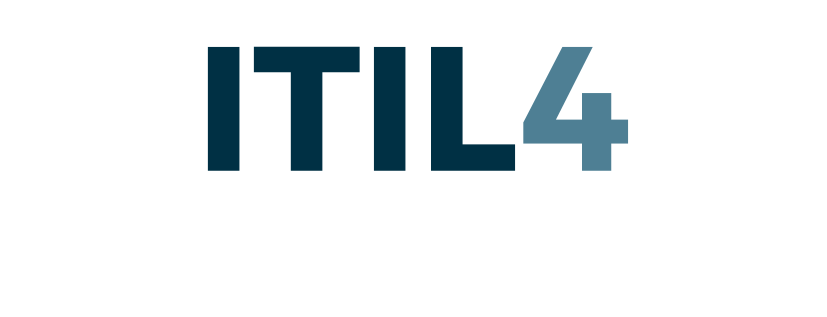
… high-velocity adventures in
Service Management universe!
ORGANIZATION
A person or a group of people that has its own functions with responsibilities, authorities and relationships to achieve its objectives.

SERVICE MANAGEMENT
A set of specialized organizational capabilities for enabling value for customers in the form of services.


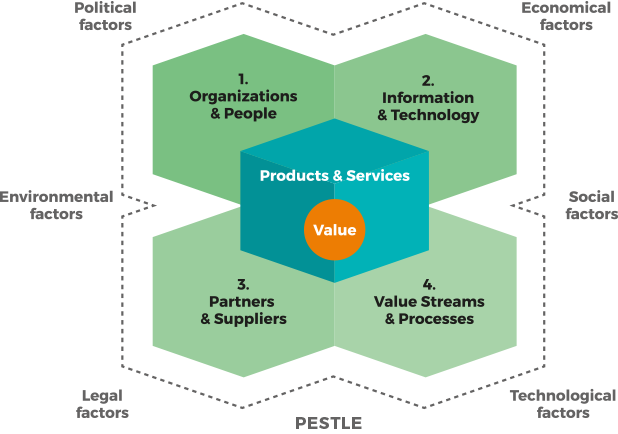
4 Dimensions
of service management
- ensure holistic approach to service management
- represent perspectives which are relevant to the whole SVS
- apply to the SVS in general, as well as all services being managed

VALUE STREAM
A series of steps an organization undertakes to create and deliver products and services to consumers.

PROCESS
A set of interrelated or interacting activities that transform inputs into outputs. A process takes one or more defined inputs
and turns them into defined outputs. Processes define the sequence of actions and their dependencies.

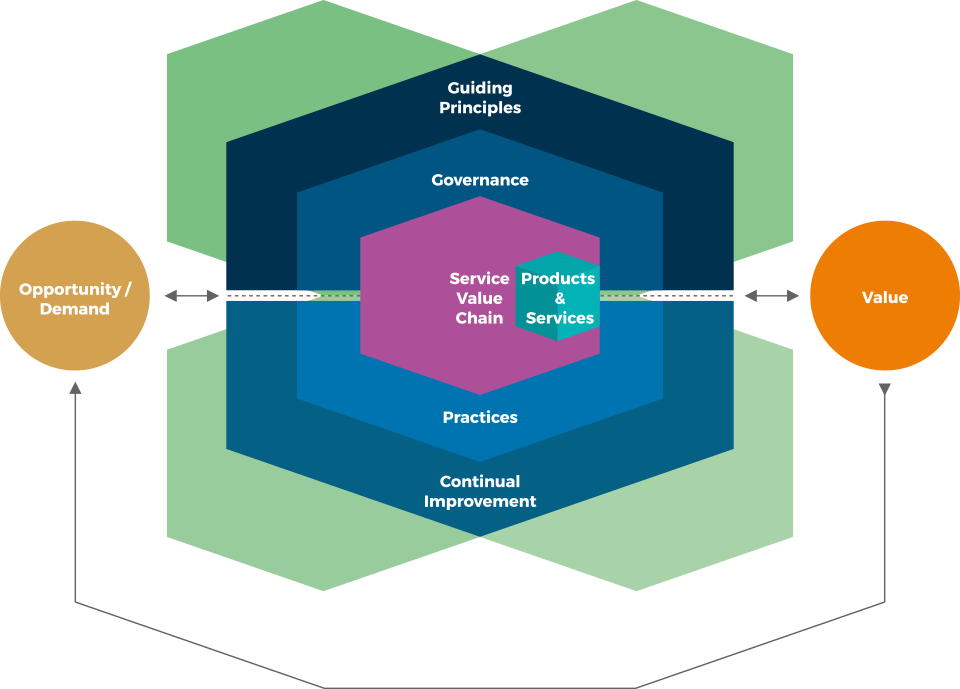
Service Value System (SVS)
ITIL SVS describes how all the components and activities of the organization work together as a system to enable value creation.


Opportunity and Demand
Opportunity and Demand trigger activities within the ITIL SVS, and these activities lead to the creation of value
Opportunities:
options or possibilities to add value for stakeholders or otherwise improve the organization.
Demand:
need or desire for products and services among internal and external consumers.
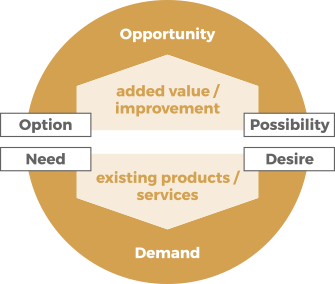


Guiding Principles
Guiding Principles: recommendations that can guide an organization in all circumstances, regardless of changes in its goals, strategies, type of work, or management structure.
ITIL Guiding Principles guide organization’s decisions and actions and ensure a shared understanding and common approach to service management across the organization:
Note: The Guiding principles
- guide organizations as they ADOPT a service management approach
- guide organization as they ADAPT ITIL guidance to their own specific needs and circumstances
- encourage and support organizations in CONTINUAL IMPROVEMENT at all levels.

Governance
Organizational governance is a system by which an organization is directed and controlled.
Governance is realized though the activities:
Evaluate, Direct, Monitor
that enable organizations to continually align their operations with the strategic direction set by the governing body.
GOVERNING BODY
a person or group of people who are accountable at the highest level for the perfomance and compliance of the organization.


Service Value Chain
Service value chain is an operating model which outlines the key activities required to respond to demand and facilitate value creation through the creation and management of products and services.
ITIL service value chain includes six value chain activities:
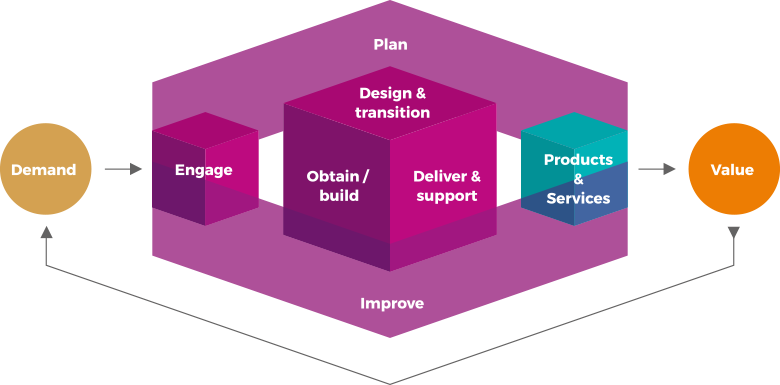
1. Plan
ensures a shared understanding of the vision, current status and improvement direction for all four dimensions and all products and services across the organization.
2. Improve
ensures continual improvement of products, services and practices across all value chain activities and the four dimensions of service management.
3. Engage
provides a good understanding of stakeholder needs, transparency, and continual engagement and good relationships with all stakeholders.
4. Design and transition
ensures that products and services continually meet stakeholder expectations for quality, costs and time-to-market.
5. Obtain/build
ensures that service components are available when and where they are needed, and meet agreed specifications.
6. Deliver and support
ensures that services are delivered and supported according to agreed specifications and stakeholders’ expectations.
Each activity may draw upon internal or third party resources, processes, skills and competencies from one or more practices….

Practices
Sets of organizational resources designed for performing work or accomplishing an objective. These resources are grouped into the four dimensions of service management.
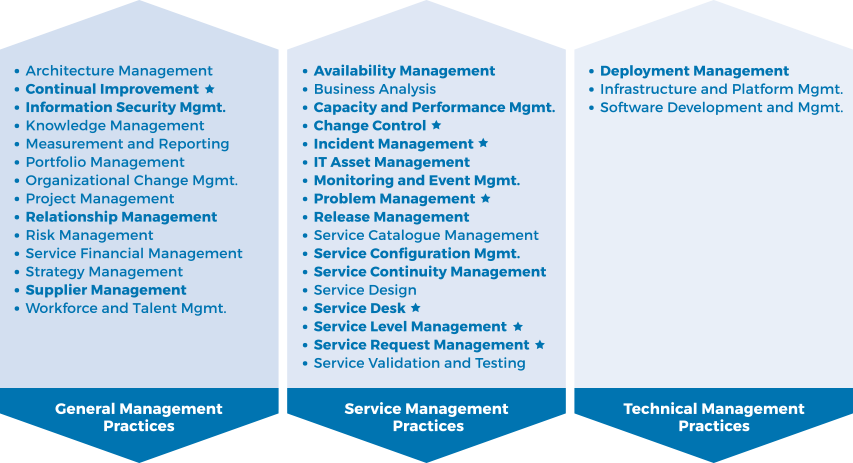

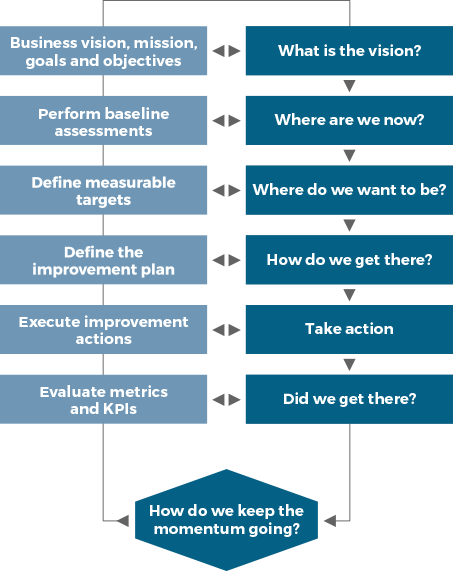
Continual Improvement
A recurring organizational activity performed at all levels to ensure that an organization’s performance continually meets stakeholders’ expectations.
ITIL continual improvement model provides organizations with a structured approach to implementing improvements.
Note:
The continual improvement model applies to the SVS in its entirety, as well as to all of the organization’s products, services, service components and relationships.

Products & Services
Service:
A means of enabling value co-creation by facilitating outcomes that customers want to achieve, without the customer having to manage specific costs and risks.
Service relationship:
A co-operation between a service provider and service consumer. Service relationships include service provision, service consumption and service relationship management.
Service offering:
A description of one or more services, designed to address the needs of a target consumer group. A service offering may include goods, access to resources, and service actions.
Product:
A configuration of an organization’s resources designed to offer value for a consumer.
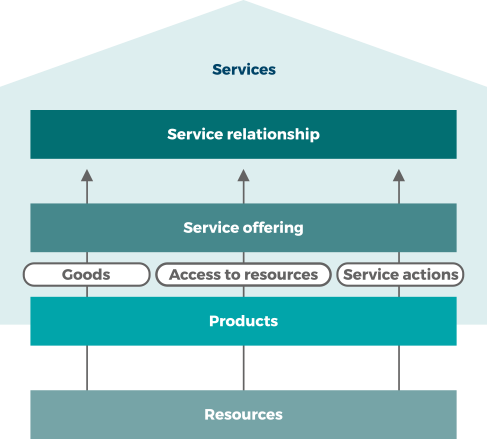


UTILITY & WARRANTY
are essential for a service to facilitate its desired outcomes
Utility:
what the service does (functionality)
Warranty:
how the service performs (service level)

OUTCOME, COST & RISK
Output:
A tangible or intangible deliverable of an activity.
Outcome:
A result for a stakeholder enabled by one or more outputs.
Cost:
The amount of money spent on a specific activity or resource.
Risk: A possible event that could cause harm or loss, or make it more difficult to achieve objectives. Risk can also be defined as uncertainty of outcome, and can be used in the context of measuring the probability of positive outcomes as well as negative outcomes.

Value
Value is the perceived benefits, usefulness and importance of something.
